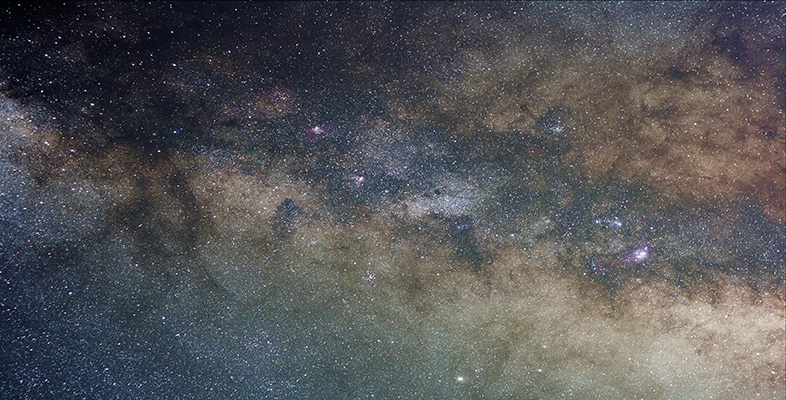5.3 The broad- and narrow-line regions
In our model, the engine is surrounded by gas clouds (Figure 32). You have already seen how common these are in our own and other galaxies, so it is reasonable to expect them to be present in at least the spiral galaxies that contain AGNs. If these gas clouds are illuminated by ultraviolet or X-rays from the engine they will absorb the ultraviolet or X-ray energy, and will emit the characteristic lines of the gases making up the clouds. The most abundant gas in galactic clouds is hydrogen, and, sure enough, the H![]() and other lines of hydrogen appear strongly in the observed spectra of AGNs.
and other lines of hydrogen appear strongly in the observed spectra of AGNs.
What about other spectral lines that might be expected? Fortunately we get clues from objects in our own Galaxy, the HII regions, which consist of gas clouds illuminated by sources of ultraviolet radiation, albeit at a lower luminosity. These HII regions emit strong lines of nitrogen and oxygen, [NII] and [OIII], in the optical. Sure enough, the lines that appear in the optical spectra of AGNs turn out to be just what you would expect from a gas of normal cosmic composition surrounding an AGN.
As you have discovered, there appear to be two kinds of line-emitting regions known as the broad-line region (BLR) and narrow-line region (NLR). If we interpret the spectra in terms of the density (inferred from the presence or absence of forbidden lines) and motion of gas clouds (inferred from line widths), then the BLR corresponds to dense fast-moving clouds and the NLR to low-density, more slowly moving clouds.
It is not possible to see the motion in great detail, but these motions are probably associated with the strong gravitational field surrounding an AGN. The orbital speed of a cloud will increase as the distance from the central black hole decreases. Thus the faster moving BLR clouds are assumed to be closer to the centre than the slower moving NLR clouds.
